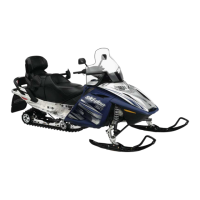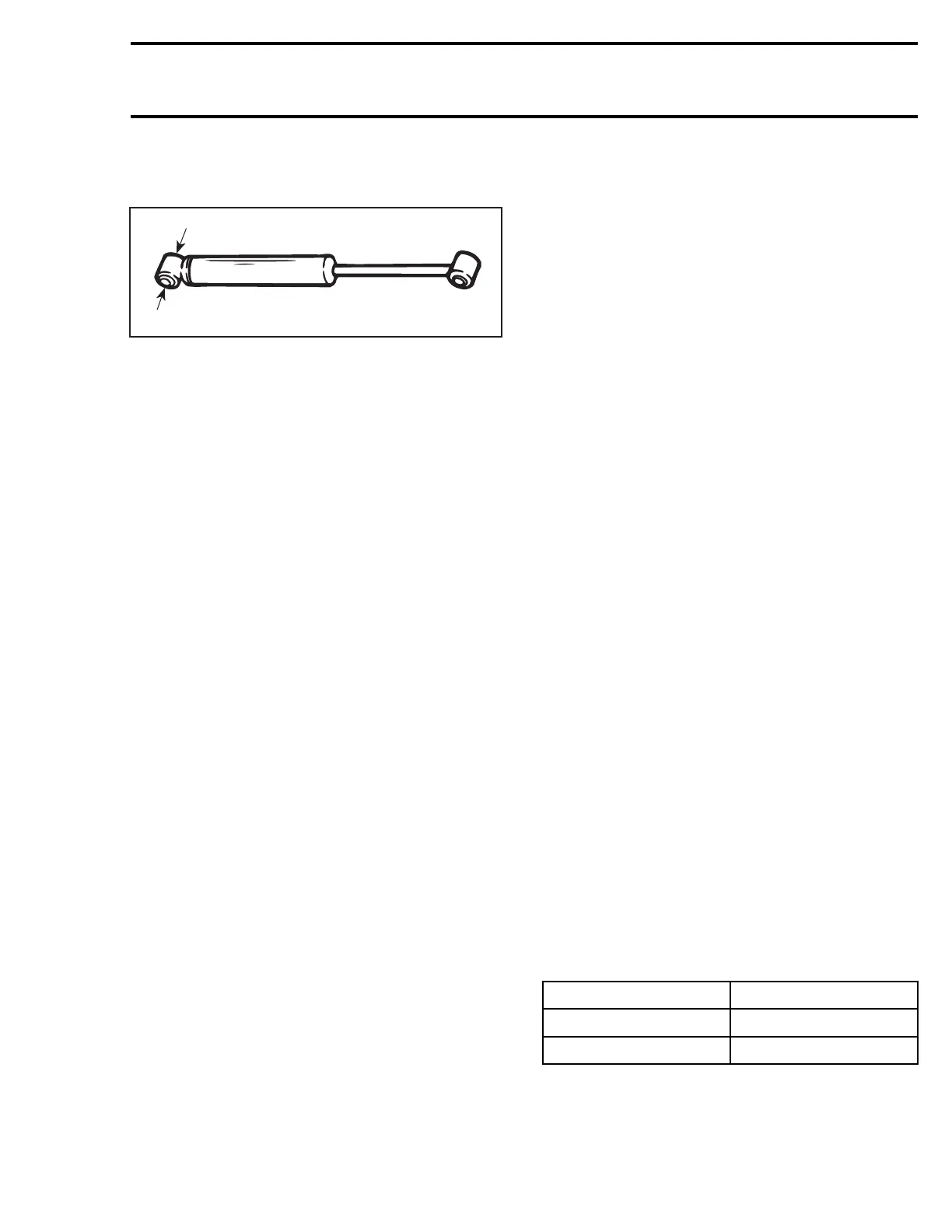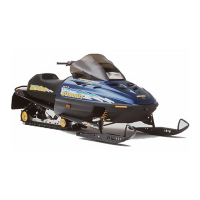Section 08 REAR SUSPENSION
Subsection 02 (SC-10 III SUSPENSION)
Secure the shock body end in a vise with its rod
upward.
A14F0BA
1
1. Clamp
CAUTION: Do not clamp directly on shock
body.
Examine each shock for leaks. Extend and com-
press the piston several times over its entire
stroke. Check that it moves smoothly and with
uniform resistance with its rod upward.
After at least 5 complete strokes, pay attention to
the following conditions that will denote a defec-
tive shock:
– A skip or a hang back when reversing stroke at
mid travel.
– Seizing or binding condition except at extreme
endofeitherstroke.
– Oil leakage.
– A gurgling noise, after completing one full com-
pression and extension stroke.
Renew if any faults are present.
MC VR Shock
For the verification of stroke, install shock in vise
keeping the rod upward. Verify the stroke com-
pression when the rod is fully extended.
The feeling will be stiff for around first 25 mm
(1 in), soft up to 25 to 50 mm (1 to 2 in) and stiff
after that. This stiff, soft and stiff phenomenon
shows the normal operation of shock.
All Models Equipped with Gas
Pressurized Shock
NOTE: Gas pressurized shocks are light gray or
purple painted, or bare aluminum.
Gas shock can be inspected as follows:
Because of gas pressure, strong resistance is felt
when compressing shock. When released, the
shock will extend unassisted. Renew as required.
If suspecting an internal gas leak between oil
chamber and gas chamber, check shock as fol-
lows:
Install shock in a vise clamping on its bottom eye-
let with its rod upward.
Let it stand for 5 minutes.
Completely push down the shock rod then re-
lease.
Rod must come out at a steady speed. If speed
suddenly increases particularly at end of exten-
sion, replace shock.
HPG VR Shock
NOTE: Gas pressurized shocks are light gray or
purple painted, or bare aluminum.
Gas shock can be inspected as follows:
Because of gas pressure, strong resistance is felt
when compressing shock. When released, the
shock will extend unassisted. The rod speed com-
ing out will go slow - faster and slow again due to
the VR zone. Renew as required.
For the verification of stroke, install shock in vise
keeping the rod upward. Verify the stroke com-
pression when the rod is fully extended.
The feeling will be stiff for around first 25 mm
(1 in), soft up to 25 to 50 mm (1 to 2 in) and stiff
after that. This stiff, soft and stiff phenomenon
shows the normal operation of shock.
All Types of Shock
If suspecting a frozen shock proceed as follows:
Place shock in a freezer (temperature below 0°C
(32°F)) for 4 hours.
Push down on rod and note its resistance. If
shock is frozen it will be much more difficult to
compress than for the new one.
HPG T/A SHOCK SERVICING
Disassembly and Assembly
There are two types of high pressure gas take
apart (HPG T/A) shock. One type has a tire valve
and the other has a needle valve.
SHOCK TYPE INFLATION TOOL
Tire valve type 529 035 570
Needle valve type 503 190 102
T/A shocks come in two sizes. C-36 shock is
36 mm (1.417 in) in diameter and C-46 shock is
46 mm (1.811 in).
mmr2004-Rev 301

